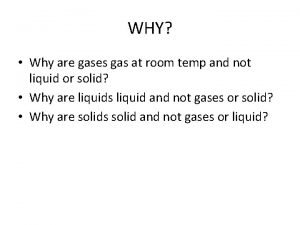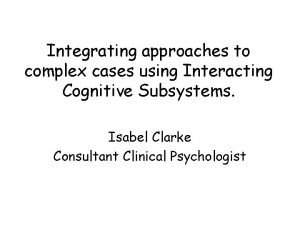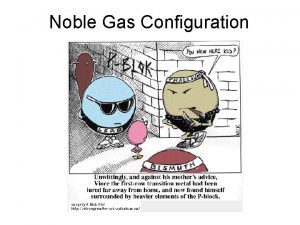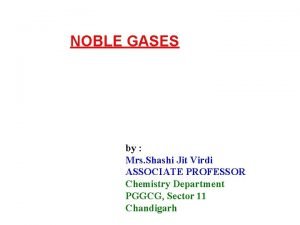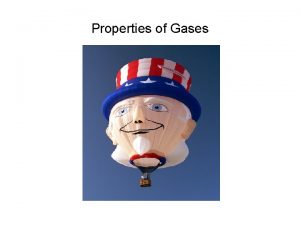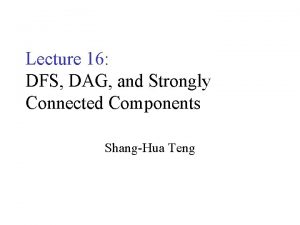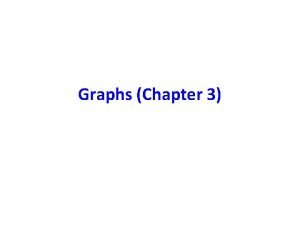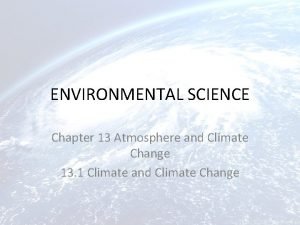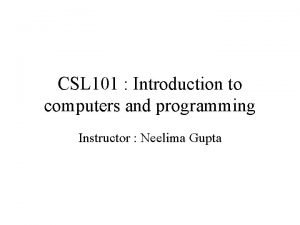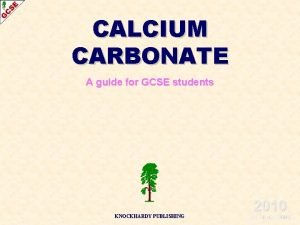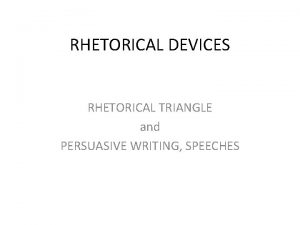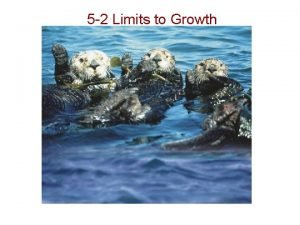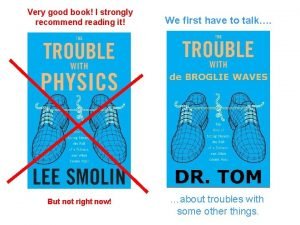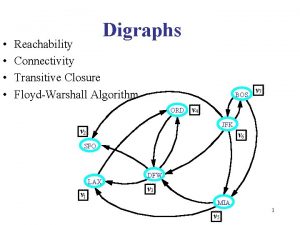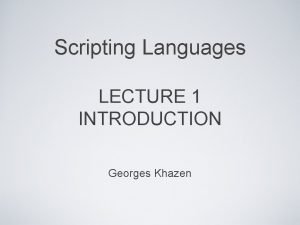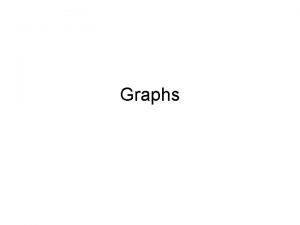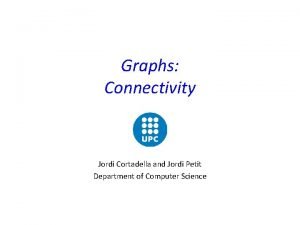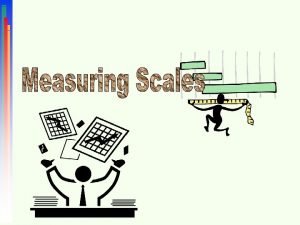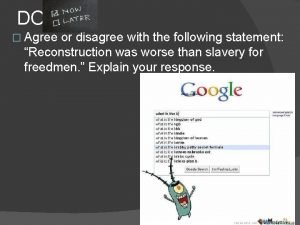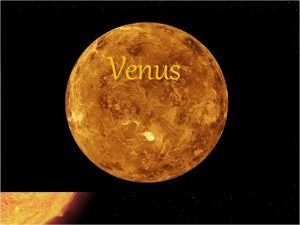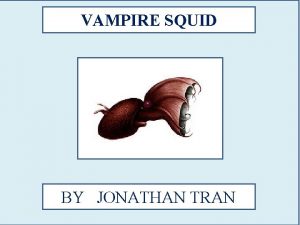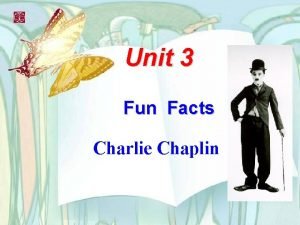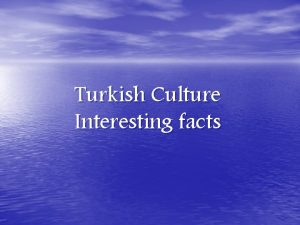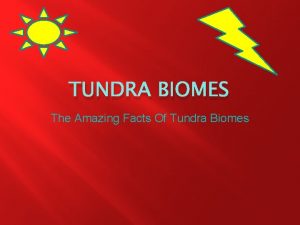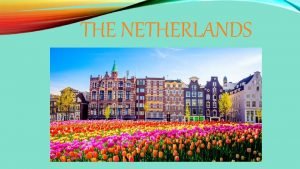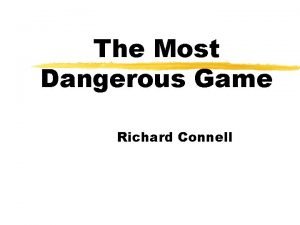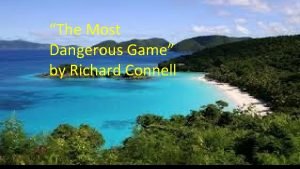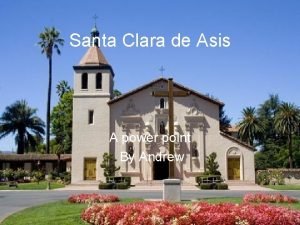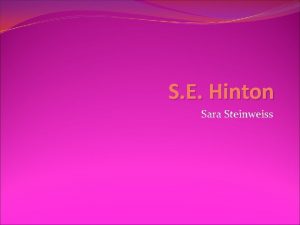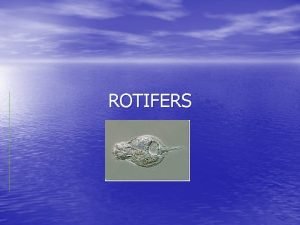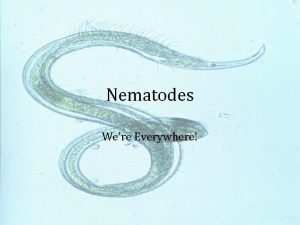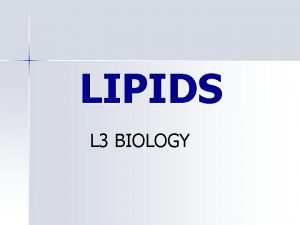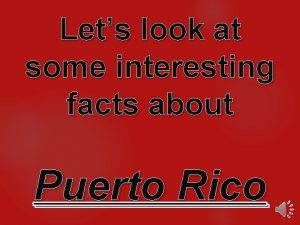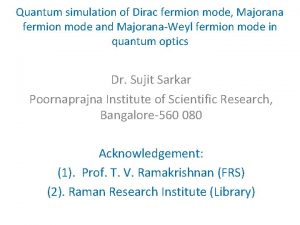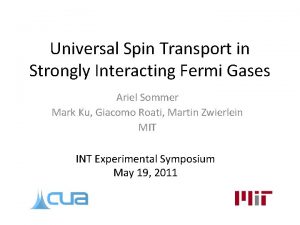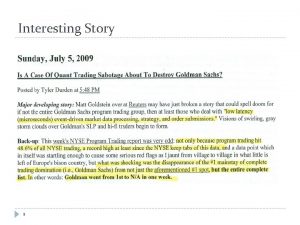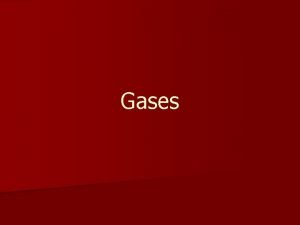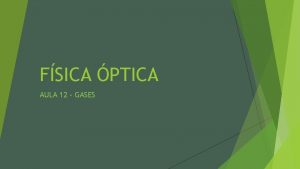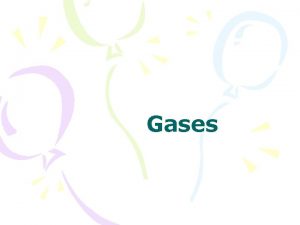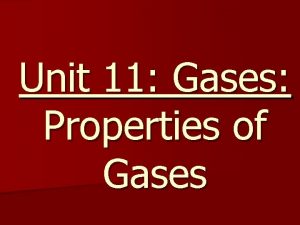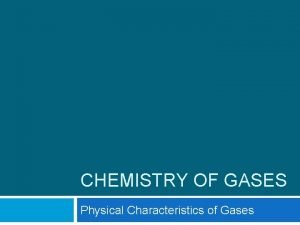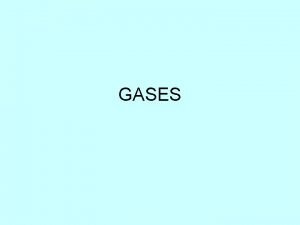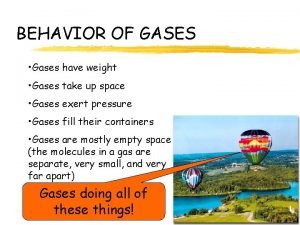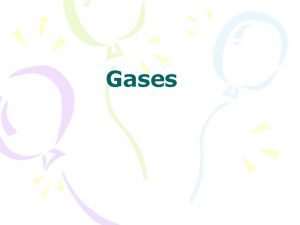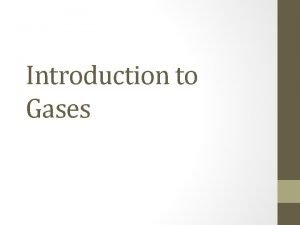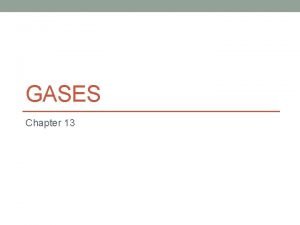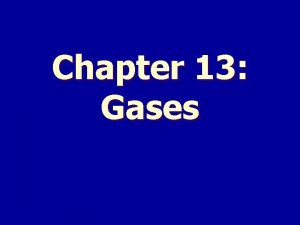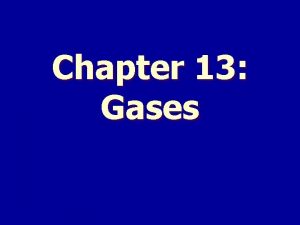Why strongly interacting fermion gases are interesting to

























































- Slides: 57

Why strongly interacting fermion gases are interesting to a many-body theorist? Aurel Bulgac University of Washington, Seattle

People I have been lucky to work with on these problems: Clockwise (starting top left corner) : G. F. Bertsch (Seattle), J. E. Drut (Seattle) , P. Magierski (Warsaw, Seattle), Y. Yu (Seattle, Lund, Wuhan), M. M. Forbes (Seattle), A. Schwenk (Seattle, Vancouver), A. Fonseca (Lisbon), P. Bedaque (Seattle, Berkeley, College Park),

What will be covered in this talk: Ø Lots of others people results (experiment and theory) throughout the entire presentation Ø What is the unitary regime? Ø The two-body problem, how one can manipulate the two-body interaction? Ø What many/some theorists know and suspect that is going on? Ø What experimentalists have managed to put in evidence so far and how that agrees with theory?

From a talk of J. E. Thomas (Duke)

From a talk of J. E. Thomas (Duke)

From a talk of J. E. Thomas (Duke)

From a talk of J. E. Thomas (Duke)

Feshbach resonance Channel coupling Tiesinga, Verhaar, Stoof Phys. Rev. A 47, 4114 (1993) Regal and Jin Phys. Rev. Lett. 90, 230404 (2003)

Bartenstein et al. Phys. Rev. Lett. 94, 103201 (2005)

Halo dimer (open channel) Most of the time two atoms are at distances greatly exceeding the range of the interaction! Köhler et al. Phys. Rev. Lett. 91, 230401 (2003), inspired by Braaten et al. cond-mat/0301489

Z – measured probability to find the two atoms in a singlet state (closed channel) Dots - experiment of Partridge et al. cond-mat/0505353

Ø What is the unitary regime? A gas of interacting fermions is in the unitary regime if the average separation between particles is large compared to their size (range of interaction), but small compared to their scattering length. The system is very dilute, but strongly interacting! n r 03 1 n |a|3 1 r 0 n-1/3 ≈ F /2 |a| r 0 - range of interaction n - number density a - scattering length

Bertsch Many-Body X challenge, Seattle, 1999 What are the ground state properties of the many-body system composed of spin ½ fermions interacting via a zero-range, infinite scattering-length contact interaction. In 1999 it was not yet clear, either theoretically or experimentally, whether such fermion matter is stable or not. - systems of bosons are unstable (Efimov effect) - systems of three or more fermion species are unstable (Efimov effect) - a number of theorists believed that the two species fermions systems are unstable as well • Baker (winner of the MBX challenge) concluded that the system is stable. See also Heiselberg (entry to the same competition) • Chang et al (2003) Fixed-Node Green Function Monte Carlo and Astrakharchik et al. (2004) FN-DMC provided best theoretical estimates for the ground state energy of such systems. • Thomas’ Duke group (2002) demonstrated experimentally that such systems are (meta)stable.

BCS →BEC crossover Leggett (1980), Nozieres and Schmitt-Rink (1985), Randeria et al. (1993), … If a<0 at T=0 a Fermi system is a BCS superfluid If |a|=∞ and nr 03 1 a Fermi system is strongly coupled and its properties are universal. Carlson et al. PRL 91, 050401 (2003) If a>0 (a r 0) and na 3 1 the system is a dilute BEC of tightly bound dimers

From a talk of J. E. Thomas (Duke)

Ground state properties of unitary gases

Consider Bertsch’s MBX challenge (1999): “Find the ground state of infinite homogeneous neutron matter interacting with an infinite scattering length. ” Ø Carlson, Morales, Pandharipande and Ravenhall, PRC 68, 025802 (2003), with Green Function Monte Carlo (GFMC) normal state Ø Carlson, Chang, Pandharipande and Schmidt, PRL 91, 050401 (2003), with GFMC superfluid state This state is half the way from BCS→BEC crossover, the pairing correlations are in the strong coupling limit and HFB invalid again.

Theory (QMC) Experiment Note, no reliable experimental determination of the pairing gap yet!

BEC side BCS side Solid line with open circles – Chang et al. physics/0404115 Dashed line with squares - Astrakharchik et al. cond-mat/0406113

Green Function Monte Carlo with Fixed Nodes S. -Y. Chang, J. Carlson, V. Pandharipande and K. Schmidt physics/0403041

Fixed node GFMC results, S. -Y. Chang et al. (2003)

Determining the critical temperature for the superfluid to normal phase transition in theory and experiment

Grand Canonical Path-Integral Monte Carlo calculations on 4 D-lattice Trotter expansion (trotterization of the propagator) Recast the propagator at each time slice and use FFT Discrete Hubbard-Stratonovich transformation σ-fields fluctuate both in space and imaginary time Running coupling constant g defined by lattice A. Bulgac, J. E. Drut and P. Magierski

Superfluid to Normal Fermi Liquid Transition Bogoliubov-Anderson phonons and quasiparticle contribution (red line ) Bogoliubov-Anderson phonons contribution only (magenta line) People never consider this ? ? ? Quasi-particles contribution only (green line) • Lattice size: from 63 x 112 at low T to 63 x 30 at high T • Number of samples: Several 105’s for T • Also calculations for 43 lattices • Limited results for 83 lattices

Experimentally one needs a thermometer! Solution: Measure the entropy S as a function of the energy E and use T = d. E/d. S Chen et al, PRL 95, 260405 (2005) Exp: Luo et al, PRL (2007)

How to use Quantum Monte Carlo results to describe what is going on in an atomic trap at finite temperature and confront theory and experiment? Use Local Density Approximation (LDA) in conjunction with the Universality of Fermi Gases energy density entropy density

Experiment – red symbols Luo et al, PRL (2007) Blue curves – pure theory

Collective modes

Sound in infinite fermionic matter Local shape of Fermi surface Collisional Regime - high T! Compressional mode Spherical Superfluid collisionless low T! Compressional mode Spherical Normal Fermi fluid collisionless - low T! (In)compressional mode Elongated along propagation direction Sound velocity First sound Bogoliubov. Anderson sound Landau’s zero sound Need repulsion !!!

Grimm, cond-mat/0703091

Adiabatic regime Spherical Fermi surface Bogoliubov-Anderson modes in a trap Perturbation theory result using GFMC equation of state in a trap Only compressional modes are sensitive to the equation of state and experience a shift!

Innsbruck’s results - blue symbols Duke’s results - red symbols First order perturbation theory prediction (blue solid line) Unperturbed frequency in unitary limit (blue dashed line) Identical to the case of non-interacting fermions If the matter at the Feshbach resonance would have a bosonic character then the collective modes will have significantly higher frequencies!

High precision results Radial breathing mode: theory vs experiment meanfield Eo. S – light curve, MC Eo. S – thick curve Grimm, cond-mat/0703091

If we set our goal to prove that these systems become superfluid, there is no other way but to show it! Is there a way to put directly in evidence the superflow? Vortices!

The depletion along the vortex core is reminiscent of the corresponding density depletion in the case of a vortex in a Bose superfluid, when the density vanishes exactly along the axis for 100% BEC. From Ketterle’s group Fermions with 1/k. Fa = 0. 3, 0. 1, 0, -0. 1, -0. 5 Bosons with na 3 = 10 -3 and 10 -5 Extremely fast quantum vortical motion! Number density and pairing field profiles Local vortical speed as fraction of Fermi speed

Zweirlein et al. cond-mat/0505653

Zweirlein et al. cond-mat/0505653

Phases of a two species dilute Fermi system BCS-BEC crossover T High T, normal atomic (plus a few molecules) phase Strong interaction weak interaction BCS Superfluid a<0 no 2 -body bound state ? weak interactions Molecular BEC and Atomic+Molecular Superfluids a>0 1/a shallow 2 -body bound state halo dimers

Until now we kept the numbers of spin-up and spin-down equal. What happens when there not enough partners for everyone to pair with? What theory tells us?

Green – spin up Yellow – spin down LOFF solution (1964) Pairing gap becomes a spatially varying function Translational invariance broken Muether and Sedrakian (2002) Translational invariant solution Rotational invariance broken

LOFF and Deformed Fermi Surfaces pairing can occur only for relatively small imbalances. What happens if the imbalances become large?

Son and Stephanov, cond-mat/0507586 Parish, Marchetti, Lamacraft, Simons cond-mat/0605744 Pao, Wu, and Yip, PR B 73, 132506 (2006) Sheeny and Radzihovsky, PRL 96, 060401(2006)

What really is happening! Induced p-wave superfluidity in asymmetric Fermi gases Two new superfluid phases where before they were not expected Bulgac, Forbes, Schwenk One Bose superfluid coexisting with one P-wave Fermi superfluid Two coexisting P-wave Fermi superfluids

BEC regime Ø all minority (spin-down) fermions form dimers and the dimers organize themselves in a Bose superfluid Ø the leftover/un-paired majority (spin-up) fermions will form a Fermi sea Ø the leftover spin-up fermions and the dimers coexist and, similarly to the electrons in a solid, the leftover spin-up fermions will experience an attraction due to exchange of Bogoliubov phonons of the Bose superfluid

p-wave gap Bulgac, Bedaque, Fonseca, cond-mat/030602 !!!

BCS regime: The same mechanism works for the minority/spin-down component


ØT=0 thermodynamics in asymmetric Fermi gases at unitarity in a trap Use Local Density Approximation (LDA)

Now let us concentrate on a spin unbalanced Fermi gas at unitarity

At unitarity almost everything is a function of the densities alone at T=0! We use both micro-canonical and grand canonical ensembles The functions g(x) and h(y) determine fully thermodynamic properties and only a few details are relevant

Both g(x) and h(y) are convex functions of their argument. Bounds given by GFMC Non-trivial regions exist! Bounds from the energy required to add a single spin-down particle to a fully polarized Fermi sea of spin-up particles

Now put the system in a trap

• • • blue green red - P = 0 region 0 < P < 1 region P= 1 region

Column densities (experiment) Normal Superfluid Zweirlein et al. cond-mat/0605258

Experimental data from Zwierlein et al. cond-mat/0605258

Rf -spectroscopy Grimm, cond-mat/0703091 Schunck et al, cond-mat/0702066

The unitary Fermi gases (at resonance and off resonance) have an extremely rich structure and a very rich phase diagram The tunability of the interaction is a non-paralleled feature of these systems Theoretically these systems can be described essentially exactly and they present an extraordinary opportunity to test lots of many-body techniques and develop new ones It can have a major impact on other fields One can simulate both theoretically and experimentally lots of systems encountered in condensed matter physics, nuclear physics and astrophysics
 Interesting more interesting the most interesting
Interesting more interesting the most interesting Antigentest åre
Antigentest åre Why why why why
Why why why why Interacting with coworkers
Interacting with coworkers Interacting molecules or ions
Interacting molecules or ions Interacting cognitive subsystems
Interacting cognitive subsystems Dont ask
Dont ask Why are they called noble gases
Why are they called noble gases Why is gas easier to compress than liquid and solid
Why is gas easier to compress than liquid and solid Why was the term inert gases dropped?
Why was the term inert gases dropped? Explain, using kinetic particle theory, why gases diffuse.
Explain, using kinetic particle theory, why gases diffuse. Gases have low densities
Gases have low densities U vegetable
U vegetable Types of programming languages
Types of programming languages Strongly connected graph
Strongly connected graph Theory x and theory y
Theory x and theory y Strongly connected graph
Strongly connected graph Strongly connected components
Strongly connected components Latitude strongly influences climate because
Latitude strongly influences climate because Difference between strongly and weakly typed languages
Difference between strongly and weakly typed languages Caco3 heated
Caco3 heated 8 vegetable classifications
8 vegetable classifications India is strongly influenced by monsoon winds
India is strongly influenced by monsoon winds Logos definition in literature
Logos definition in literature 5-2 limits to growth
5-2 limits to growth I strongly recommend this book
I strongly recommend this book Kosaraju's algorithm
Kosaraju's algorithm Floyd warshall algorithm transitive closure
Floyd warshall algorithm transitive closure Which word most strongly appeals to pathos?
Which word most strongly appeals to pathos? Interpreted language vs compiled language
Interpreted language vs compiled language Strongly connected components
Strongly connected components Strongly connected components
Strongly connected components Agree disagree
Agree disagree Example of itemized rating scale
Example of itemized rating scale How strongly do you agree with the following statement
How strongly do you agree with the following statement What is graduated rhythm
What is graduated rhythm Interesting facts about venus
Interesting facts about venus Balboa route
Balboa route Trananimal
Trananimal Charlie chaplin interesting facts
Charlie chaplin interesting facts Turkey culture facts
Turkey culture facts Tundra biome facts
Tundra biome facts Ed ing ly openers
Ed ing ly openers Interesting facts about respiratory system
Interesting facts about respiratory system Anne frank fun facts
Anne frank fun facts Interesting facts about the most dangerous game
Interesting facts about the most dangerous game Richard connell
Richard connell The great barrier reef interesting facts
The great barrier reef interesting facts Plus minus interesting example
Plus minus interesting example Santa clara de asis facts
Santa clara de asis facts S.e. hinton interesting facts
S.e. hinton interesting facts Rotifer facts
Rotifer facts Facts about nematoda
Facts about nematoda 5 facts about much ado about nothing
5 facts about much ado about nothing Lipids facts biology
Lipids facts biology Puerto rico fun facts
Puerto rico fun facts Fun facts about lent
Fun facts about lent 5 facts about lent
5 facts about lent




